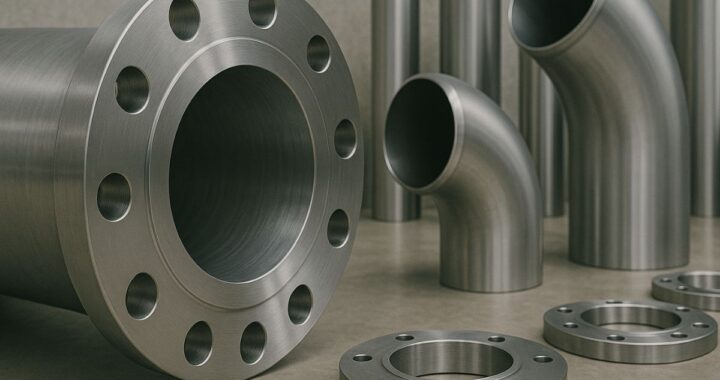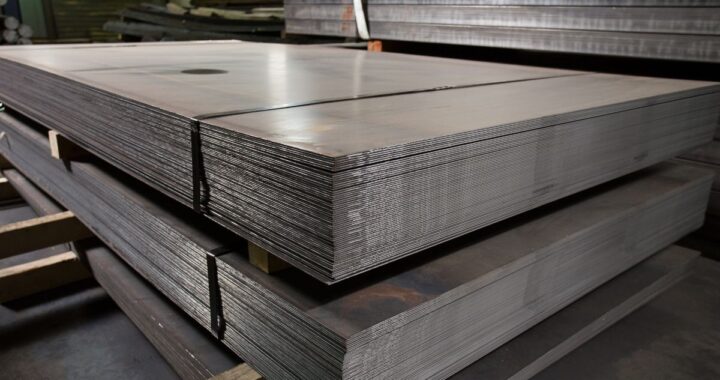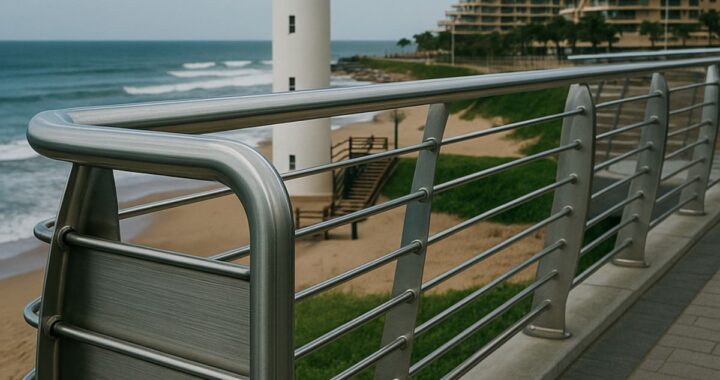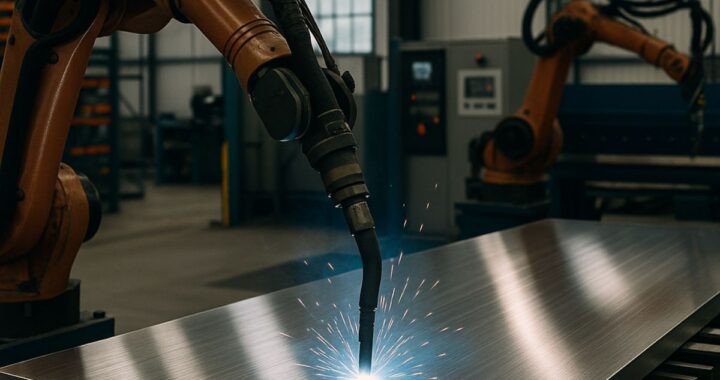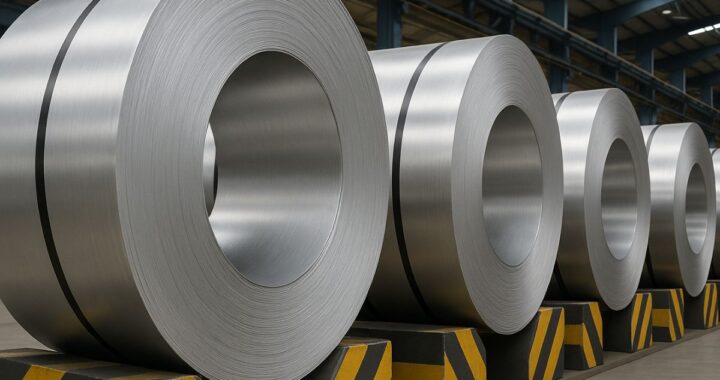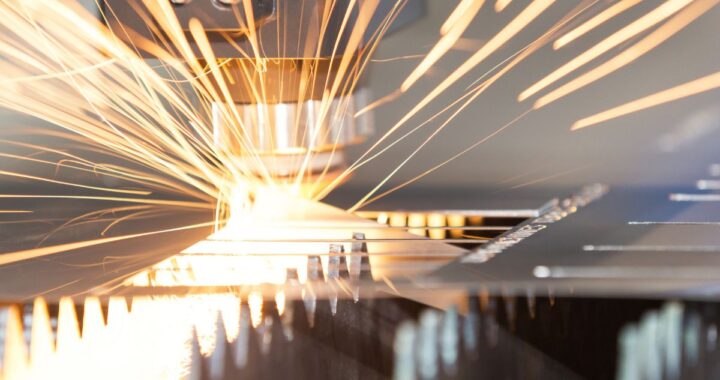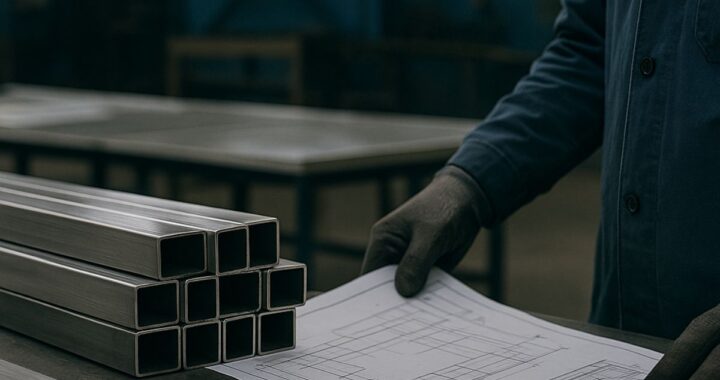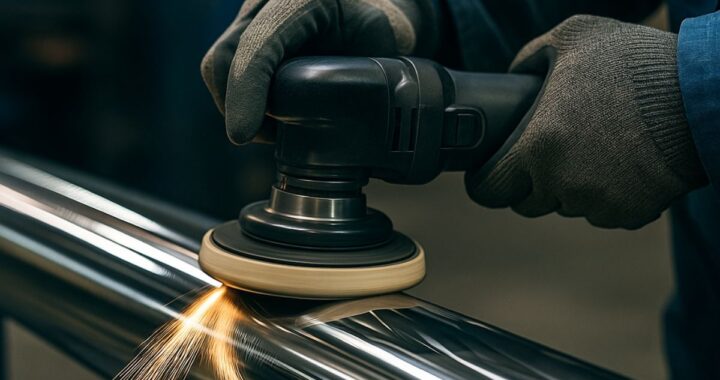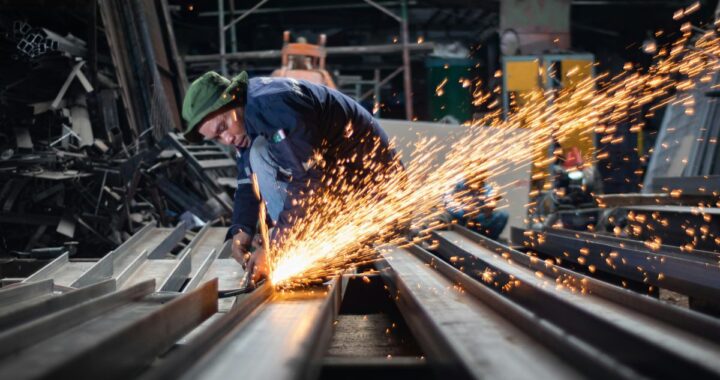1. “Just quote on stainless fabrication” is not a spec
If you work in procurement or projects, you have probably sent or received a request that reads something like, “Please quote on stainless steel fabrication as per attached.”
It sounds fine. It is not fine.
Behind that single line you are often hiding a dozen unspoken decisions:
- What grade of stainless
- What thickness
- What cutting process
- What weld procedures
- What finish
- What tolerances
- What documentation
If you leave those things open, you are not just giving your supplier freedom. You are creating room for misunderstandings, change orders and “we thought you meant” conversations halfway through the job.
NSSC sees this pattern all the time. From their base in Bredell, Kempton Park, they support buyers in FMCG, mines, hospitals, hotel groups, commercial property and industrial facilities across South Africa. The projects range from hygienic housings to heavy duty mining launders. The common thread is simple. The clearer the specification, the smoother the fabrication.
So let’s walk through how to specify stainless fabrication properly, from cutting to welding, so your next RFQ actually says what you think it says.
To achieve true precision in stainless steel processing, NSSC offers a complete range of specialised cutting and fabrication solutions. Our advanced laser cutting services deliver unmatched accuracy and clean edges across all stainless steel grades, while our high-powered plasma cutting services provide fast, efficient results for thicker materials. For straightforward, high-speed sheet processing, our guillotine cutting services ensure perfectly straight cuts with minimal waste. When projects demand complex perforations or intricate profiles, our CNC punching services offer precision and repeatability at scale. Finally, for components that require exact weld preps or aesthetic finishing, our bevelling services deliver smooth, uniform edges that meet the highest fabrication standards.
2. You are not just buying steel, you are buying process
Here is the thing. When you buy fabricated stainless, you are not really buying metal. You are buying controlled processes applied to metal.
Those processes include:
- Selecting the correct grade and thickness
- Cutting it to the right shape
- Forming and bending it without damaging the material
- Welding parts together without inviting future corrosion or cracking
- Finishing the surface so it does what it needs to do, whether that is hygiene, corrosion resistance or appearance
NSSC’s capabilities are built around exactly these steps. They run laser and high definition plasma equipment, waterjet cutting, guillotining, CNC tube bending, section and plate rolling, press braking, polishing, CNC machining and milling, plus welding. The point is not to make the list long. The point is that your specification should guide which of these tools get used and how.
If you do not say anything, the fabricator will choose. Sometimes that works. Sometimes it just works for them, not for you.
3. Start with where the job lives
Before you talk grades or cutting methods, start with the context. A stainless enclosure in a hospital basement is not the same as a stainless chute in a coastal mine, even if they are both “just stainless”.
When you prepare a spec or RFQ, it helps to say:
- Which sector and site (FMCG bottling hall, mine plant, hotel kitchen, chilled warehouse, hospital theatre area)
- Any specific hygiene or safety standards (food grade, medical, dust control, ATEX, etc.)
- The environment: wet or dry, indoor or outdoor, coastal or inland, chemical exposure, cleaning regime
- Expected service life and how often the area can realistically be taken out of service
You do not have to write a novel. Even a short paragraph in the RFQ that explains the reality on site already helps NSSC’s team guide you toward sensible materials and processes.
You know what? That context line is often worth more than the entire bill of quantities when it comes to choosing how to cut, weld and finish.
4. Material spec: more than “304 stainless”
Let’s move into the steel itself.
If you write “stainless steel” with no further detail, you are inviting guesswork. A better approach is to specify, at minimum:
- Grade (for example 304, 304L, 316, 316L, relevant duplex grades)
- Thickness range for each component
- Any specific requirements for toughness, strength or corrosion performance
- Need for material certificates or mill test reports
For food plants, hospitals and many chemical or coastal applications, the difference between 304 and 316 is not academic. For some mining duties, duplex stainless grades make sense in high stress, aggressive environments. NSSC carries a range of sheets and plates in different grades, including duplex and other alloys, which is why they ask those questions upfront.
Also remember: if you want all parts in a structure to match in grade, say so clearly. Mixing grades in one assembly can create galvanic corrosion issues or unexpected behaviour over time.
Traceability is another hidden topic. If you need line of sight from finished part back to material batch for audits, that should be part of the specification, not something you try to add at the end.
5. Choosing your cutting method: where laser, plasma and waterjet fit
Now we get to the fun part. How the material is cut matters more than many people realise.
NSSC offers several cutting methods, each with strengths:
- Laser cutting for precision, tight tolerances and clean edges on many thicknesses
- High definition plasma for thicker materials and robust plate work
- Waterjet cutting where heat input must be minimal or where certain materials do not like heat
- Guillotining for straight cuts on plate and sheet
If your parts have complex profiles, tight tolerances, small holes or interlocking tabs, specifying that you require laser cutting is useful. It signals that cut quality and accuracy are critical. For heavy plate where edges will be machined or ground later, plasma might be more appropriate and cost-effective.
If you have heat sensitive components, or you are working with laminated materials or combined stainless and other media, waterjet starts to make more sense.
The trick is not to prescribe a process blindly, but to connect it to:
- The thickness and grade
- Required tolerances
- Edge quality required
- How the edge will be used in the next step (for example welded or left exposed)
If you are unsure, you can describe the functional requirement, and NSSC can suggest the cutting route. The more you say about what the part must do, the better they can choose how to cut it.
6. Forming and bending: specifying shape, not just length and width
Flat parts are the easy part. Most real world components need bending, rolling or forming.
NSSC runs CNC tube bending, section rolling and plate rolling equipment. That lets them produce:
- Rolled shells for tanks and ducts
- Curved sections for balustrades, frames or structural elements
- Bent channels and brackets with repeatable angles
When you specify these operations, it helps to include:
- Inside or outside bend radii
- Acceptable tolerances on angle and overall length after bending
- Whether cosmetic appearance at the bend is critical
- Whether spring back or fit-up is sensitive in assemblies
For tubes, say if the internal bore must remain clean and smooth for flow, or if slight deformation is acceptable. For rolled plate, specify whether the seam will be welded and ground flush, or whether it can remain visible.
Here is a practical tip. If the parts need to fit with other trades or pre-existing structures, try to share that information with NSSC. A small tweak in bend angle or radius early on can save a lot of grinding and rework on site later.
7. Welding: manual, semi-automatic and robotic
Welding is where stainless fabrication can go very right or very wrong.
Poorly planned welding can introduce:
- Distortion
- Residual stress
- Heat tint and oxidation
- Contamination that becomes a corrosion hotspot
In your specification, you do not always need to dictate every weld size and process, but you should give direction on things like:
- Weld type (fillet, butt, full penetration or cosmetic)
- Critical joints where strength or hygiene is vital
- Whether welds must be ground and polished flush
- Requirements around distortion control and straightness
In high repeat work, or where consistency is key, you may want to ask if robotic welding is available or suitable. Robotic systems bring repeatable travel speed, arc length and sequence. That helps where you have many identical frames, brackets or assemblies and you want every weld to behave the same way.
NSSC’s welding capability is integrated with its cutting and forming operations, so they can manage weld prep, joint design and finishing as part of one workflow. That is important. You do not want a beautiful cut and bend ruined by a rushed weld procedure that leaves rainbow heat tint everywhere on a supposedly hygienic surface.
If your industry is sensitive to contamination or hygiene, such as food, beverage or medical, talk about cleaning and passivation after welding as part of the scope. It is easier to include it in the initial spec than to argue about “who must clean what” once the parts arrive.
8. Surface finishing: not just for looks
It is easy to treat surface finish as an aesthetic bolt-on. In stainless work, it is often a performance factor.
Different finishes influence:
- Cleanability in food and medical environments
- Corrosion resistance in coastal or chemical conditions
- Glare, reflection and visual comfort in public or office areas
NSSC offers polishing and finishing services on stainless. To use that fully, you want to specify:
- Required finish (for example mill finish, brushed, satin, mirror, bead blasted)
- Which faces need that finish and which are non-critical
- Whether welds must be finished to match surrounding surfaces
- Any roughness limits if you work under specific hygiene standards
For example, a hotel kitchen splashback might need a consistent brushed finish that hides fingerprints and minor scuffs. A pharmaceutical plant component might need a smooth, low roughness surface to prevent product build-up. A coastal balustrade could need a finish that sheds salt and is easy to wash down.
If you only say “stainless steel”, you will get whatever finish suits the fabricator’s default process. Sometimes that is fine. Sometimes it is exactly what causes tea staining or cleaning headaches six months down the line.
9. Quality control and documentation: build it into the spec
Quality is not just a certificate on the wall. It is a set of steps.
NSSC operates under ISO TÜV 9001 certified quality controls. That gives you a framework for:
- Material batch traceability
- Dimensional inspection
- Weld procedure and welder qualifications where relevant
- Final visual and dimensional checks
When you specify a job, think about what you will need for your own records or audits:
- Do you need material certificates? For all parts or only some?
- Do critical welds require procedure qualification records or welder qualifications?
- Are there any site-specific standards or client specs the work must comply with?
If you mention these up front, NSSC can build them into the workflow and costing. If you add them later, they either cost more or are harder to provide.
For buyers in hospitals, FMCG and chemical industries, this documentation can make the difference between a smooth audit and a scramble to piece together what was actually installed.
10. Drawings, files and how to brief your fabrication partner
Here’s the thing. Your specification lives in two worlds at once. The written world of the RFQ, and the visual world of drawings and 3D models.
To make life easier for everyone:
- Use clear, updated drawings that match the written scope
- Indicate revisions clearly, so NSSC knows which is the latest version
- Supply CAD files in agreed formats where possible, not only PDFs
- Label assemblies and parts in a way that flows through to marking on the actual components
This is where NSSC’s processing power really helps. Laser, plasma and waterjet systems can work directly from digital data. CNC bending and machining do the same. That reduces manual transcribing of dimensions, which reduces errors.
If you know that a design is still evolving, say so and agree on a cut off point for changes. Surprises two days before cutting starts are expensive. Surprises halfway through cutting are more expensive.
Also think about how the parts will be packed and delivered. For large sets of similar items, installation goes quicker if pallets or bundles are grouped by zone or sequence, not mixed randomly. A simple packing instruction in your spec can save plenty of head scratching on site.
11. Where NSSC fits into the bigger picture
Now let’s pull NSSC directly into this story.
As a specialist in stainless steel fabrication South Africa, NSSC is structured as a one stop partner for:
- Material supply in a wide range of grades and thicknesses, including duplex and specialist alloys
- Cutting via laser, high definition plasma, waterjet and guillotining
- Forming through CNC tube bending, section and plate rolling and press braking
- Machining and milling for precise features, slots and holes
- Polishing and finishing
- Welding, including complex assemblies
NSSC’s customers are not limited to one sector. They work with FMCG producers, mines, hospital groups, hotel and leisure brands, commercial property owners and general industrial clients. That mix gives them a broad view of what works in different real world conditions.
From their site on the corner of Pomona Road and 5th Avenue in Bredell, Kempton Park, they combine in-house processing with technical support and relatively quick turnaround on cut-to-size requirements. They also back it up with ISO TÜV 9001 certification and BBBEE Level 3 status, which ticks important boxes for larger corporates and listed entities.
In practice, this means you can send a more detailed spec and expect a considered response. Not just a price per kilogram, but questions or suggestions that help sharpen the brief and avoid pitfalls.
12. A practical buyer’s checklist for specifying stainless fabrication
To make this easier to apply next time you open a new RFQ document, here is a simple checklist you can adjust for your own business:
- Have you described the environment and sector clearly?
- Have you specified grade and thickness for each major component or area?
- Do you know which parts need high precision cutting, and have you said so?
- Are forming and bending requirements, including radii and tolerances, written down?
- Have you stated expectations around weld type, finishing and cleanliness?
- Have you defined the surface finish for visible or hygienic areas?
- Are quality documentation needs (certificates, inspection) included?
- Are drawings, file formats and revision rules agreed?
- Have you mentioned packing, labelling and delivery preferences that help your site team?
- Have you flagged any areas where you are unsure and need NSSC’s input, rather than leaving it unsaid?
You do not have to tick every box perfectly. Even getting to seven or eight out of ten will already make your RFQ clearer than most. Your fabricator, in this case NSSC, can then fill in gaps with targeted questions instead of wild guesses.
13. Turning vague RFQs into reliable stainless work
At first glance, all of this might sound like “more work” for busy buyers and engineers. The reality is the opposite. A well-written spec saves work.
It cuts down on:
- Back and forth emails
- Clarification calls
- On-site rework
- Finger pointing after something does not fit
It also opens the door for NSSC to help you, instead of simply pricing whatever vague description landed in the inbox.
Whether you are planning a new filling line for an FMCG plant, upgrading a mine’s process area, fitting out a hospital sterilisation unit or refurbishing a hotel kitchen, the principles stay the same. Explain where the job lives, what the components must do, and how long they must last. Then build material, cutting, forming, welding, finishing and quality into the spec.
From there, a partner like NSSC can translate that into real parts: cut, formed, welded and finished stainless components that arrive ready to install, not ready to argue about.
If you are staring at a new project and thinking, “I am not sure my current spec actually says all this”, that is a good moment to have a conversation. NSSC’s team is available by phone on +27 11 552 8800 or via info@nssc.co.za. Bring the drawings, bring the constraints, and let them help you shape a fabrication brief that gets you what you really need, not just what fits into one line on a quote request.
